Material Collection
Insulation
Insulation has been a much analyzed and observed material category in the green building movement. As we learn more about toxicity and hazards, how do we balance the demand for high performance with potential human health impacts? The products in this collection look to holistically address health and sustainability, considering thermal performance and renewable and recycled resources, and avoiding commonly added toxic chemicals such as halogenated flame retardants.
Below are a few examples of insulation that meet our rigorous evaluation. For further help on your own search for healthier insulation, scroll down to "Spec Guidance”.
Insulation
17 products
About Our Collections
The goal of our collections is to help promote transparency in the material ingredients of building products by fostering knowledge and awareness of products and materials for which life-cycle information is available, and that have environmentally, economically, and socially preferable life-cycle impacts.
Keep an eye out for the following symbols:
A Healthier Affordable Building Product
Products with the designation of "Healthier & Affordable" were specified and installed in at least one of our Case Studies of healthier affordable housing.
Available at the Donghia healthier Materials Library
The Donghia healthier Materials Library library is open to Parsons student and faculty. Learn more about access and opening hours here.
Low Embodied Carbon
“Embodied Carbon” is the total amount of carbon emitted during the process of making a material. *HML refers to a manufacturer's EPD to determine whether a product's A1-A3 carbon emissions falls within HML's threshold for Low Embodied Carbon.
New Product
This product has been added to the collection within the past six months.
Product in Development
Products with this designation identify they are currently scaling or only available in markets outside of the building industry. they could be experimental or in use in capsule collections.
Available in the EU
Products with this designation are currently available only in the European Union and identified as being an exemplary healthy option in the respective product group.
Ingredient Disclosures
There are several ways of evaluating a material’s health that we include with product information. Disclosures are reports by manufacturers about product ingredients, impacts, or other attributes.
Key Disclosures include:
Health Product Declaration (HPD)
A voluntary technical specification for reporting information on product contents and associated health information, intended to be the health-analogue to Environmental Product Declarations (EPDs).
Declare Label
Declare is a transparency platform and product database that answers three questions:
1. Where does a product come from?
2. What is it made of?
3. Where does it go at the end of its life?
Environmental Product Declaration (EPD)
A standardized format for communicating the environmental effects associated with a product’s raw materials extraction, energy use, chemical makeup, waste generation, and emissions to air, soil, and water.
Safety Data Sheet (SDS)
A reporting format that provides basic information about a material’s chemical ingredients, the potential safety hazards to installers, and recommended practices for installation.
USDA Certified Biobased Product Label
Managed by the U.S. Department of Agriculture (USDA), the goal of the BioPreferred Program is to increase the purchase and use of biobased products.
Other
| Manufacturer | Product | Ingredient Disclosures |
|---|---|---|
| Knauf Insulation | EcoBatt |
EcoBattLow-Embodied Carbon MaterialEcoBatt Insulation is free of formaldehyde, acrylics, and artificial colors. This insulation combines post-consumer recycled bottle glass and Knauf’s ECOSE Technology. It can be used for walls, ceilings, sound control, floors, attics, and mid-floor applications. This product is Declare Red List Free. It has also achieved a Greenguard Gold Certification, which ensures that it meets strict standards for VOC emissions. Per EPD, this product meets HML's criteria for low embodied carbon - thanks in large part to its use of recycled materials. Knauf currently has 27 productions across the US, Europe, and the Middle East. When specifying this product be sure to consider the distance it will travel to your site. Ecobatt's R-value range is declared between 8-49. CategoryInsulation / Fibrous, Cellulosic, Granular, FiberglassManufacturerKnauf Insulation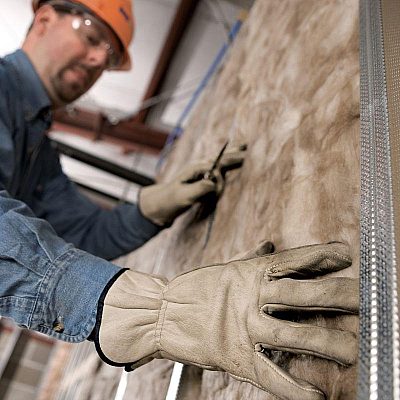
Material composition*Glass oxide <100%,Syrups, hydrolyzed starch <10%, Ammonium Sulfate 1-5%, Mineral Oil 1-5%, Silane <1% *as reported by the manufacturer AVAILABLE SIZINGAvailable in a variety of sizes and thicknesses for wood and metal framing COLORSTaupe CERTIFICATIONS & DISCLOSURES
Health Product Declaration (HPD)
Declare Label
Environmental Product Declaration (EPD)
Safety Data Sheet (SDS)
USDA Certified Biobased Product Label
Other
GREENGUARD | Gold
Declare | Red List Free
Contributes to LEED credits
Additional DocumentsLast UpdatedDecember 16, 2025 |
| Knauf Insulation | Jet Stream Ultra |
Jet Stream UltraUsed in Healthier Affordable HousingAvailable At the Donghia Materials LibraryLow-Embodied Carbon MaterialKnauf Insulation Jet Stream ULTRA is an unbonded, fibrous glass blowing insulation that is designed to be used in attics or with the BIBS system (Blown-in-Blanket System). This product is Declare Red List Free, and meets the strict VOC emission standards for the Greenguard Gold Certification. Additionally, it is made with over 60% post-consumer recycled glass (cullet) content. Per Knauf's product-specific EPD, Jet Stream Ultra meets HML's criteria for low embodied carbon. Knauf currently has 27 production across the US, Europe, and the Middle East. When specifying this product be sure to consider the distance it will travel to your site. Jet Stream's R-value range is declared between 11-60 per inch. CategoryInsulation / Fibrous, Cellulosic, Granular, FiberglassManufacturerKnauf Insulation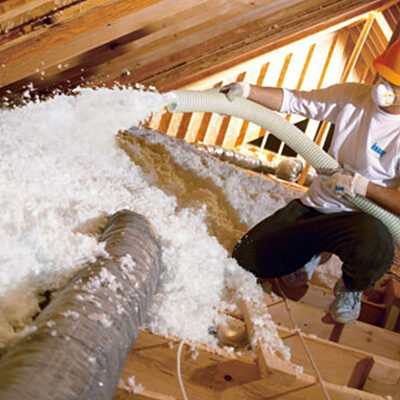
Material composition*Post Consumer Cullet 59.3%, Sand 17.3%, Borax 9.2%, Soda Ash 5.1%, Quicklime 3.7%, in-house cullet 2.5% *as reported by the manufacturer AVAILABLE SIZING32 lb Package COLORSWhite CERTIFICATIONS & DISCLOSURES
Health Product Declaration (HPD)
Declare Label
Environmental Product Declaration (EPD)
Safety Data Sheet (SDS)
USDA Certified Biobased Product Label
Other
Declare | Red List Free
GREENGUARD | Gold
Contributes to LEED credits
Additional DocumentsLast UpdatedJanuary 13, 2026 |
| Bonded Logic | UltraTouch |
UltraTouchUltraTouch Denim Insulation is an alternative to traditional fiberglass batt insulation that is free of VOCs and other chemical irritants. This product contains 80% post-consumer recycled denim, and provides excellent sound absorption and thermal insulation. Denim Insulation's R-value range is declared between 8-30. CategoryInsulation / Fibrous, Cellulosic, Granular, DenimManufacturerBonded Logic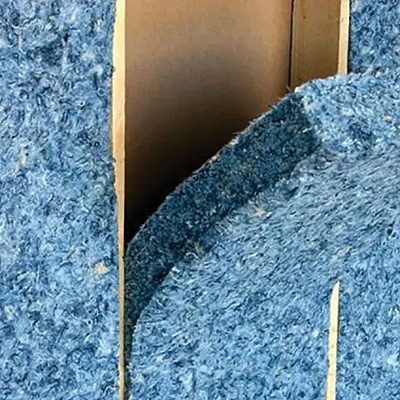
Material composition*Recycled Fiber 80%, Binder Fiber, Ammonium Sulfate, Boric Acid (undisclosed %) *as reported by the manufacturer AVAILABLE SIZINGAvailable in a variety of sizes and thicknesses for wood and metal framing COLORSBlue CERTIFICATIONS & DISCLOSURES
Health Product Declaration (HPD)
Declare Label
Environmental Product Declaration (EPD)
Safety Data Sheet (SDS)
USDA Certified Biobased Product Label
Other
Contributes to LEED credits
Additional DocumentsLast UpdatedDecember 16, 2025 |
| US Greenfiber LLC | Cellulose Fiber Insulation |
Cellulose Fiber InsulationThis product provides a natural insulation alternative that optimizes human and environmental health. Greenfiber's cellulose insulation is free from formaldehyde, asbestos, glass fibers, and mineral wool. The product is also made with up to 85% recycled materials from local sources, diverting hundreds of tons of paper from landfills and reducing energy consumption from transporting raw materials. Greenfiber's R-value is declared at 3.8/inch. CategoryInsulation / Fibrous, Cellulosic, Granular, CelluloseManufacturerUS Greenfiber LLC
Material composition*Cellulose Fiber <86%, Boric Acid <11%, Calcium Sulfate Dihydrate <2%, Distillate Mineral Oil <1% *as reported by the manufacturer AVAILABLE SIZING19.05 lb Package COLORSOff-White CERTIFICATIONS & DISCLOSURES
Health Product Declaration (HPD)
Declare Label
Environmental Product Declaration (EPD)
Safety Data Sheet (SDS)
USDA Certified Biobased Product Label
Other
Declare | Red List Free
Contributes to LEED credits
Additional DocumentsLast UpdatedDecember 16, 2025 |
| Roxul | Safe |
SafeUsed in Healthier Affordable HousingAvailable At the Donghia Materials LibraryLow-Embodied Carbon MaterialSafe is batt insulation made from mineral wool that provides acoustic dampening and is non-combustible. Safe N Sound is similar to Rockwool's Safe product but is primarily for interior applications. It is Greenguard Gold Certified, meaning it meets strict requirements for VOC and formaldehyde emissions. This product meets HML's low embodied carbon standards per Rockwool's EPD for its stone wool insulation. Production facilities are located in the US and Canada. For shorter transportation, the North American Market is therefore preferable. Rockwool's Ontario location uses a substantial amount of recycled material. *NOTE: This product contains phenol-formaldehyde. According to the manufacturer: "Phenol formaldehyde is allowed in rigid mineral wool insulation for exterior applications (such as rain screen assemblies or foundation insulation). While rigid mineral wool insulation does contain some formaldehyde, most of the formaldehyde is eliminated in the production process through a chemical reaction and high heat. Rigid mineral wool insulation installed on the exterior of the building possess less risk to humans and ecosystem than rigid foam insulation products, which almost always contain HFRs and use blowing agents with high global warming potential." Roxul's R-value range is declared at 4.2/inch. CategoryInsulation / Fibrous, Cellulosic, Granular, Mineral FiberManufacturerRoxul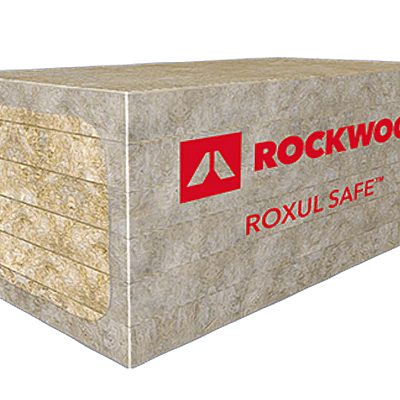
Material composition*Stone Wool Biosoluble 95-100%, Syrups Hydrolyzed Starch 1-2%, Phenolic Formaldehyde Binder 0-1%, Urea Binder 0-1% *as reported by the manufacturer AVAILABLE SIZINGAvailable in a variety of sizes and thicknesses for wood and metal framing COLORSTaupe CERTIFICATIONS & DISCLOSURES
Health Product Declaration (HPD)
Declare Label
Environmental Product Declaration (EPD)
Safety Data Sheet (SDS)
USDA Certified Biobased Product Label
Other
GREENGUARD | Gold
Contributes to LEED credits
Additional DocumentsLast UpdatedDecember 16, 2025 |
| Amorim Isolamentos | Thermacork Standard Insulation |
Thermacork Standard InsulationAvailable At the Donghia Materials LibraryLow-Embodied Carbon MaterialThermacork is a 100% natural, renewable, recyclable, and biodegradable rigid-insulation material produced from natural cork. Under the effect of pressure and superheated steam, cork granules expand and are agglomerated, originating blocks, avoiding any type of added adhesives. Cork forests benefit the environment, acting as habitats for a diverse range of species and providing a carbon sink that captures CO2 and greenhouse gases from the atmosphere. Per EPD, this product meets HML's criteria for low embodied carbon. Like most cork producers, Amorim Isolamentos, S.A. is based in Portugal. Thermacork's R-value is declared at 4/inch. CategoryBoard Insulation, CorkManufacturerAmorim Isolamentos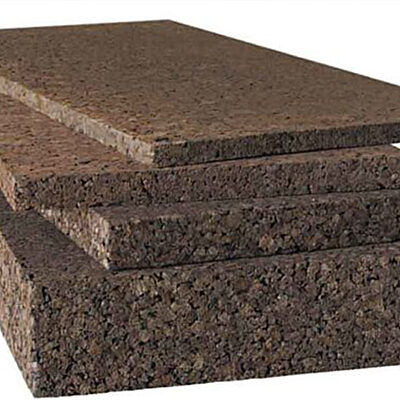
Material composition*100% cork (suberin, lignin and cellulose). *as reported by the manufacturer AVAILABLE SIZING8"x 39” Panel - Available in a variety of thicknesses COLORSBurnt Cork CERTIFICATIONS & DISCLOSURES
Health Product Declaration (HPD)
Declare Label
Environmental Product Declaration (EPD)
Safety Data Sheet (SDS)
USDA Certified Biobased Product Label
Other
Declare | Red List Free
FSC Certification
Last UpdatedJanuary 13, 2026 |
| Havelock Wool | Wool Batt Insulation |
Wool Batt InsulationAvailable At the Donghia Materials LibraryLow-Embodied Carbon MaterialSheep's wool provides a healthy and comfortable choice for insulation. Wool is naturally flame resistant. Additionally, wool's unique structure (a hydrophobic exterior and hydrophilic interior) allows it to absorb up to 35% of its weight in moisture from a room. When used as insulation, this gives wool the unique capacity to manage both humidity and temperature. Batt insulation requires the material to hold its shape. Traditional batts are held together with chemical additives. Havelock Wool's uses needle punching to hold their product together, avoiding toxic chemicals. Per Havelock's EPD, this product meets HML's criteria for low embodied carbon. Havelock's wool insulation are produced in Reno, NV, making its application most impactful on projects in western United States. *Note: Havelock's Loose Fill Insulation has R values of 4.3 and also meets HML's criteria for low embodied carbon. CategoryInsulation / Fibrous, Cellulosic, Granular, WoolManufacturerHavelock Wool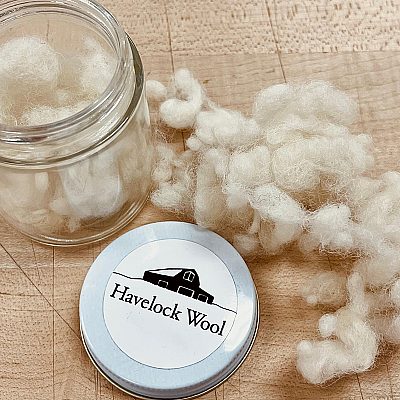
Material composition*Wool, Boric Acid *as reported by the manufacturer AVAILABLE SIZING15.5" wide rolls, available in 2", 3", and 5.5" thicknesses CERTIFICATIONS & DISCLOSURES
Health Product Declaration (HPD)
Declare Label
Environmental Product Declaration (EPD)
Safety Data Sheet (SDS)
USDA Certified Biobased Product Label
Other
Last UpdatedDecember 16, 2025 |
| IsoHemp | Hempcrete Block |
Hempcrete BlockAvailable At the Donghia Materials LibraryIsoHemp’s hempcrete blocks are a non-load-bearing masonry product. These natural, healthy blocks are designed to be used for insulating envelopes, partition walls, and counter-partitions. Made only from hemp and lime, hempcrete’s ability to diffuse accumulated heat makes it a fantastic thermal regulator. This product also regulates humidity due to its permeability and is naturally very fire-resistant, making toxic flame retardants obsolete. Not only are IsoHemp hempcrete blocks good for human health, they also have a positive environmental impact. Their manufacture requires very little energy, and they act as a carbon sink, actively absorbing CO2 from the air. CategoryInsulation / Fibrous, Cellulosic, Granular, HempLimeManufacturerIsoHemp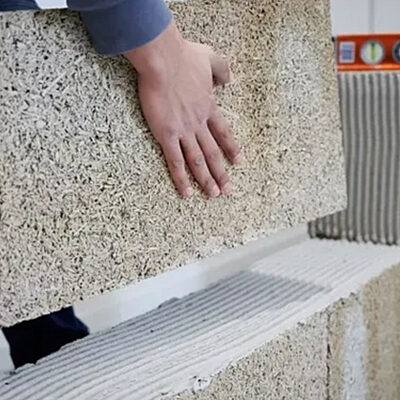
Material composition*Hemp (particle size of 2 to 20 mm) 80%, Hydraulic Lime 11%, Air Lime 9% *as reported by the manufacturer AVAILABLE SIZING30 cm x 60 cm, available in 6, 9, 12, 15, 20, and 30 cm thicknesses CERTIFICATIONS & DISCLOSURES
Health Product Declaration (HPD)
Declare Label
Environmental Product Declaration (EPD)
Safety Data Sheet (SDS)
USDA Certified Biobased Product Label
Other
Additional DocumentsLast UpdatedJanuary 13, 2026 |
| Just Bio Fiber | Hempcrete Blocks |
Hempcrete BlocksJust Bio Fiber's hempcrete blocks are a breathable, durable, non-toxic alternative to typical structural wall assemblies. Made primarily from hemp and lime, these blocks are Declare Red List Free as well as naturally fire resistant. Wall systems built with these blocks regulate temperature and humidity while retaining heat. They also do not require a vapor barrier and are resistant to mold, insects, rodents, and mildew. CategoryInsulation / Fibrous, Cellulosic, Granular, HempLimeManufacturerJust Bio Fiber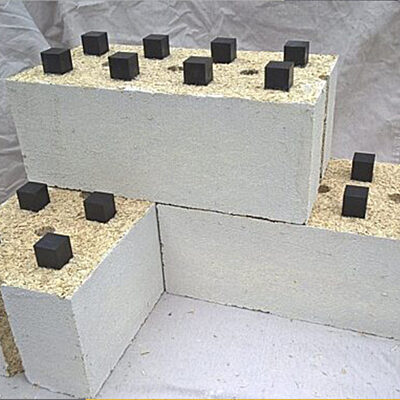
Material composition*Hemp Hurd 30-50%, Calcium Hydroxide 20-40%, Calcium Carbonate 10-30%, Calcium Magnesium Tetrahydroxide 10-30%, Kaolin 1-10%, Fibrous Glass 1-10%, Silica Sand 1%, Styrene 1% *as reported by the manufacturer AVAILABLE SIZING21.3" x 10.7" x 8" CERTIFICATIONS & DISCLOSURES
Health Product Declaration (HPD)
Declare Label
Environmental Product Declaration (EPD)
Safety Data Sheet (SDS)
USDA Certified Biobased Product Label
Other
Declare | Red List Free
Last UpdatedJanuary 13, 2026 |
| American Lime Technology | Tradical Hemcrete |
Tradical HemcreteAvailable At the Donghia Materials LibraryTradical® Hemcrete® is a highly sustainable hemp-lime product line designed to create insulating walls in new structures or to retrofit existing floors, roofs, and walls with thermally efficient, breathable insulating layers. CategoryInsulation / Fibrous, Cellulosic, Granular, HempLimeManufacturerAmerican Lime Technology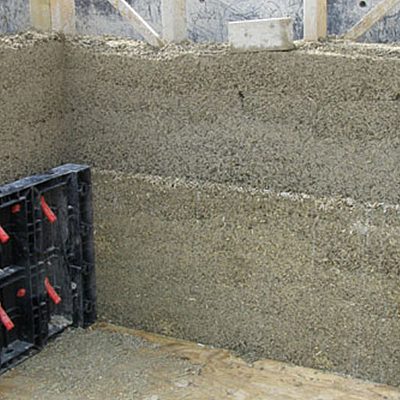
Material composition*Hemp, Lime (Calcium Hydroxide), Hydraulic Lime Binder, Calcium Carbonate, Calcium Silicates, Silica, Oxides of Magnesium, Aluminum, and Iron *as reported by the manufacturer CERTIFICATIONS & DISCLOSURES
Health Product Declaration (HPD)
Declare Label
Environmental Product Declaration (EPD)
Safety Data Sheet (SDS)
USDA Certified Biobased Product Label
Other
Last UpdatedDecember 16, 2025 |
| GUTEX | Thermofibre |
ThermofibreAvailable At the Donghia Materials LibraryGutex Thermofibre is a blow in insulation made of two components only: regionally sourced pinewood fiber and ammonium salts which act as a flame retardant. As a result, the product Thermofibre is made from natural, biodegradable materials. It is suitable for stud, rafter and ceiling insulation. It holds a European Natureplus certification that sets strict standards for material health and complies with REACH standards. Gutex is based in Germany making this a better option for projects based in central Europe. Thermofibre's R-Value range of 2.63-7.89 per inch. CategoryInsulation / Fibrous, Cellulosic, Granular, WoodManufacturerGUTEX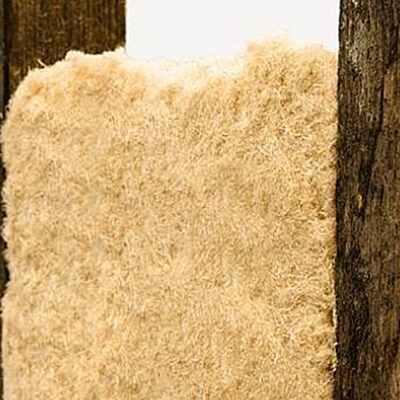
Material composition*95% Pinewood fiber, 5% ammonium salts *as reported by the manufacturer CERTIFICATIONS & DISCLOSURES
Health Product Declaration (HPD)
Declare Label
Environmental Product Declaration (EPD)
Safety Data Sheet (SDS)
USDA Certified Biobased Product Label
Other
Natureplus
Last UpdatedJanuary 13, 2026 |
| Hempitecture | Hempwool |
HempwoolAvailable At the Donghia Materials LibraryHempwool insulation has a low carbon footprint, shows excellent insulation values, is hypoallergenic, and due to its ingredients allows for a non-hazardous installation. According to Hempitecture, the mix of 92% hemp fiber and 8% polyester is heated to bond and increase strength. Polyester is petrochemically based and will not biodegrade. Alternatives are other man-made substances, currently. We appreciate this North American-made product and look forward to a healthier option as it evolves. It contains 89% Biobased Content and has been awarded the USDA Certified Biobased Product Label in the BioPreferred® Program. Note: Hempwool's declare R-value is 3.7/inch. Contains Iodine Complex FR Treatment, however they are exploring biobased options such as from chitosan. CategoryInsulation / Fibrous, Cellulosic, Granular, HempManufacturerHempitecture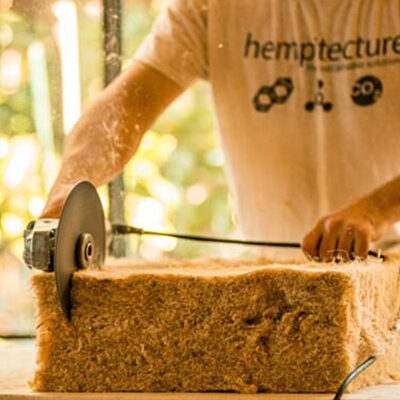
Material composition*INDUSTRIAL HEMP FIBER 25-90%, COTTON 0-65%, POLYESTER - 1-10%, CHITOSAN ASCORBATE 1-10%, IODINE COMPLEX (PHOSPHATE ESTER OF ALKYLARYLOXY POLYETHYLENE GLYCOL) 1-10% *as reported by the manufacturer CERTIFICATIONS & DISCLOSURES
Health Product Declaration (HPD)
Declare Label
Environmental Product Declaration (EPD)
Safety Data Sheet (SDS)
USDA Certified Biobased Product Label
Other
USDA Certified Biobased Product Label
Last UpdatedJanuary 13, 2026 |
| Roxul | Comfortboard 80 |
Comfortboard 80Available At the Donghia Materials LibraryLow-Embodied Carbon MaterialComfortboard 80 is a mineral wool insulation for below grade applications. This product meets HML's low embodied carbon standards per Rockwool's EPD for its stone wool insulation. Production facilities are located in the US and Canada. For shorter transportation, the North American Market is therefore preferable. Amongst all it's facilities, Rockwool's Ontario location uses the highest amount of recycled material. Comfortboard 80 R value is declared as up to R21. Per Roxul's EPD, this product meets HML's criteria for low embodied carbon.*NOTE: This product contains a higher percentage of phenol-formaldehyde. According to the manufacturer: "Phenol formaldehyde is allowed in rigid mineral wool insulation for exterior applications (such as rain screen assemblies or foundation insulation). While rigid mineral wool insulation does contain some formaldehyde, most of the formaldehyde is eliminated in the production process through a chemical reaction and high heat. Rigid mineral wool insulation installed on the exterior of the building possess less risk to humans and ecosystem than rigid foam insulation products, which almost always contain HFRs and use blowing agents with high global warming potential." Roxul's R-value range is declared at 4.2/inch. CategoryInsulation / Fibrous, Cellulosic, Granular, Mineral FiberManufacturerRoxul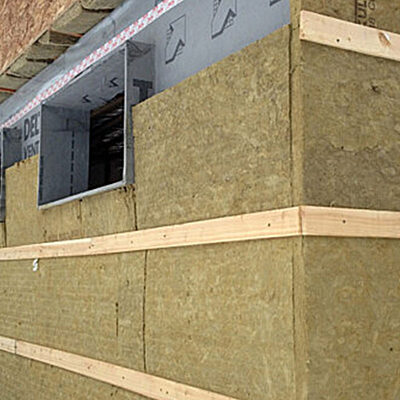
Material composition*Stone Wool 95%-100%, Syrups, Hydrolyzed Starch 1-2%, Phenol-formaldehyde 0-5%, Urea 0-1%, Undisclosed 0-1% *as reported by the manufacturer CERTIFICATIONS & DISCLOSURES
Health Product Declaration (HPD)
Declare Label
Environmental Product Declaration (EPD)
Safety Data Sheet (SDS)
USDA Certified Biobased Product Label
Other
Last UpdatedJanuary 13, 2026 |
| GUTEX |
Thermoflex
|
ThermoflexAvailable At the Donghia Materials LibraryLow-Embodied Carbon MaterialAvailable in the EUGutex Thermoflex is a wood fiber board insulation that makes use of the wood inherent lignin as binder and therefor avoids polyurethane. It can be used between studs, in post and beam interior and exterior wall structures, as between-rafter insulation and in ceilings. Thermoflex's Nominal thermal conductivity λD is 0.036 Per Gutex's product-specific EPD, Thermoflex meets HML's criteria for low embodied carbon. CategoryInsulation / Fibrous, Cellulosic, Granular, WoodManufacturerGUTEX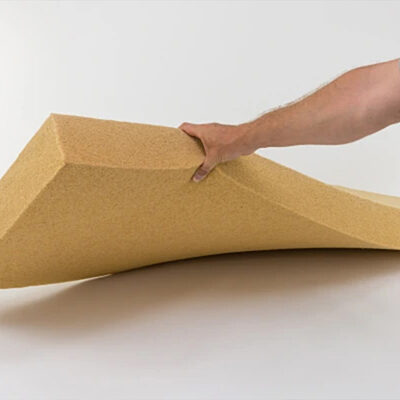
Material composition*90% Untreated fir and spruce, 6.0 % ammonium salts, approx. 5.0 % textile binder fibre (cotton) *as reported by the manufacturer CERTIFICATIONS & DISCLOSURES
Health Product Declaration (HPD)
Declare Label
Environmental Product Declaration (EPD)
Safety Data Sheet (SDS)
USDA Certified Biobased Product Label
Other
Additional DocumentsLast UpdatedJanuary 13, 2026 |
| NeptuGmbH |
NeptuTherm
|
NeptuThermAvailable in the EUNeptuTherm is a loose-fill/blow-in insulation material made from Posidonia seagrass. Naturally found in the Mediterranean as felt-like balls on the shore, it achieves B2 fire classification and Class 1 mold resistance without additives. Note: Sourced from the Mediterranean, transportation, and logistics contribute significantly to its CO2 emissions. CategoryInsulation / Fibrous, Cellulosic, Granular, SeagrassManufacturerNeptuGmbH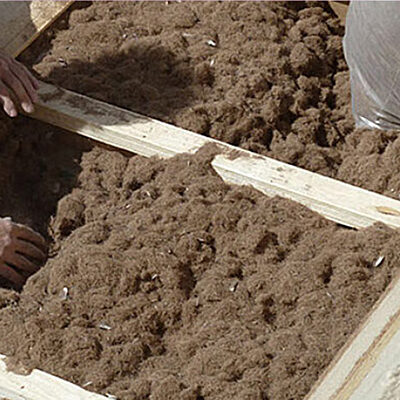
Material composition*Posidonia seagrass *as reported by the manufacturer CERTIFICATIONS & DISCLOSURES
Health Product Declaration (HPD)
Declare Label
Environmental Product Declaration (EPD)
Safety Data Sheet (SDS)
USDA Certified Biobased Product Label
Other
Last UpdatedJanuary 13, 2026 |
| TimberHP | TimberFill |
TimberFillAvailable At the Donghia Materials LibraryLow-Embodied Carbon MaterialTimberFill blown-in insulation is made of FSC-certified softwood chips processed into a loose-bodied fiber and then blended with a low percentage of borate which acts as a flame retardant and also inhibits mold and mildew growth. Through deep grant-funded research and collaborations with European producers, TimberHP now provides wood fiber insulation made in the USA, located in Maine. Note: Appropriate safety measures should be taken during install as exposure to borate and wood fibers should be minimal. R-Value is approx. 3.8/inch. CategoryInsulation / Fibrous, Cellulosic, Granular, WoodManufacturerTimberHP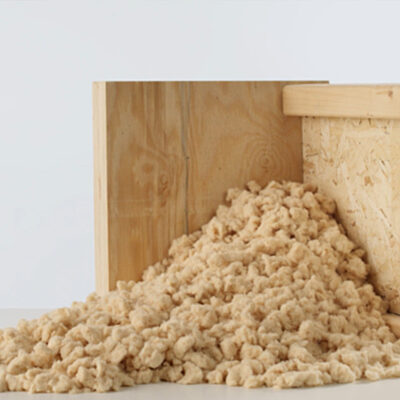
Material composition*93% Wood dust, <7% Boric Acid *as reported by the manufacturer CERTIFICATIONS & DISCLOSURES
Health Product Declaration (HPD)
Declare Label
Environmental Product Declaration (EPD)
Safety Data Sheet (SDS)
USDA Certified Biobased Product Label
Other
Additional DocumentsLast UpdatedJanuary 13, 2026 |
| Roxul | AFBevo 3 |
AFBevo 3Available At the Donghia Materials LibraryLow-Embodied Carbon MaterialAFBevo 3 is a batt insulation made from stone mineral wool that provides acoustic dampening and is non-combustible. The AFBevo 3 uses a biobased corn starch binder and contains no added formaldehyde. It is Greenguard Gold Certified and LBC Red List free. It contains 72% Biobased Content and has been awarded the USDA Certified Biobased Product Label in the BioPreferred® Program. This product meets HML's low embodied carbon standards per Rockwool's EPD for its stone wool insulation. Roxul's R-value range is declared at 4/inch. CategoryInsulation / Fibrous, Cellulosic, Granular, Mineral FiberManufacturerRoxul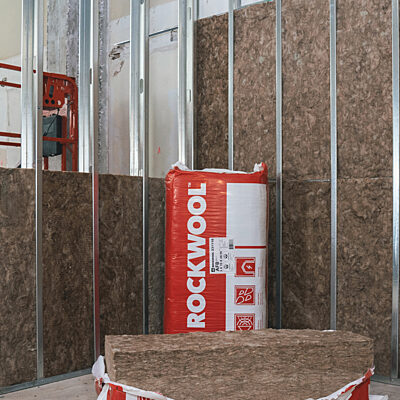
Material composition*95-100% Stone Wool, 0-5% Hydrolyzed Starch, 0-1% Residual oils (petroleum), 0-1% Urea, 0-0.1% Ammonium Phosphinate, 0-0.1% Sulfamic Acid, Monoammonium Salt *as reported by the manufacturer CERTIFICATIONS & DISCLOSURES
Health Product Declaration (HPD)
Declare Label
Environmental Product Declaration (EPD)
Safety Data Sheet (SDS)
USDA Certified Biobased Product Label
Other
GREENGUARD | Gold
Last UpdatedJanuary 13, 2026 |
The products in this collection have all been evaluated holistically for their contents and performance. To be considered, a product must disclose at least 75% of its ingredients by weight. It should avoid the biggest health concerns (such as those indicated in the HML Spec guidance for this product category) or be third-party certified.
All products are evaluated for embodied carbon {kg of CO₂ eq /square meter) if (LCA) and (EPD) documentation is available. Those under 5 kg of CO₂ equivalent per square meter earn the HML Standard for Low Embodied Carbon (LEC) and are clearly marked.
Spec Guidance
Inquire with manufacturers for transparency and LCA information as much as possible. Materials new to the market may not yet have certifications and disclosures and often are made proprietarily.
Choose unfaced fiberglass or animal wool for batt insulation. Residential fiberglass batt insulation is an affordable and energy efficient option.
For blown insulation, prefer cellulose or unbonded fiberglass.
Avoid foam. Rigid board insulation products such as EPS, XPS, and polyisocyanurate often contain harmful halogenated flame retardants. Insulations made from polystyrene foam (XPS and EPS) may off-gas styrene, a suspected carcinogen. Spray polyurethane foam (SPF) reacts on site, and is prone to releasing hazardous substances during installation.
Polyurethane products are made with activation agents that are asthma-causing isocyanates.
For board insulation, specify formaldehyde-free mineral wool boards. For sealing applications, choose caulking or sealant tapes.
Upgrade to cork free of polyurethane. Expanded cork uses heat, steam and natural Suberin to bind cork granules. While potentially more expensive, many cork insulations are free of hazardous content. (HomeFree).
Prefer mechanical installation methods to adhesives.
Reference the insulation’s R-value to determine the appropriate wall thickness. Thicker walls may be needed when selecting a healthier insulation.
Note: Borate is restricted in the EU due to reproductive harm. Choose water-based FR Additives made of Ammonium Phosphate, Ammonium Salts and Citrate.
Updated July 18, 2019
Related Tools and Guides
More Collections
Join Our Academic Network
Get Access to our carefully researched and curated academic resources, including model syllabi and webinars. An email from an academic institution or a .edu email address is required. If your academic institution does not use .edu email addresses but you would like to join the network, please contact healthymaterialslab@newschool.edu.
Already have an account? Log in